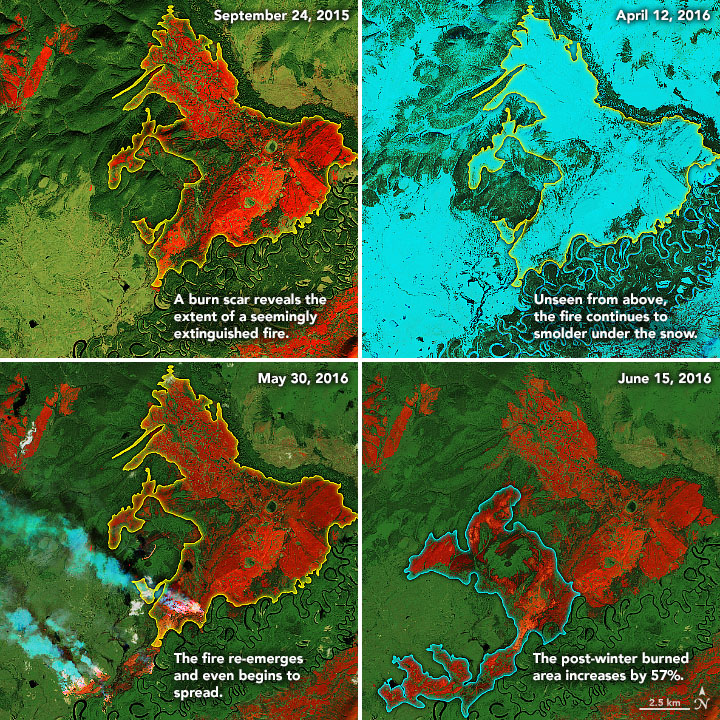Gepubliceerd op 21 mei 2021
Zombie fires, holdover fires, hibernating fires, or overwintering fires: Whatever you choose to call them, you’re probably going to hear a lot more about them in the coming years. New research shows that this type of wildfire—which can survive the snow and rain of winter to re-emerge in spring—is becoming more common in high northern latitudes as the climate warms.
“Smoldering fires are flaming fires that have entered ‘energy-saver mode,’” said Rebecca Scholten of Vrije Universiteit Amsterdam. The fires start above ground, then continue to smolder in the soil or under tree roots through winter. “These fires are only just surviving based on the resources they have—oxygen and fuel—and can transition back into flaming fires once conditions are more favorable.”

These images, acquired with the Operational Land Imager (OLI) on Landsat 8, highlight the progression of a particularly potent overwintering fire in Alaska in 2015-16. The images are false color (OLI bands 7-6-2), which emphasizes hot spots and actively burning fires while distinguishing burned vegetation (brown) from unburned vegetation (green).
In their research, Scholten and colleagues show that the boreal forests of Alaska and Canada’s Northwest Territories are especially prone to overwintering fires, where fires can burn deep into the organic soil layer. Combining ground-based fire data with fire detection data from NASA’s Moderate Resolution Imaging Spectroradiometer (MODIS) instruments on the Terra and Aqua satellites, the scientists found a way to identify overwintering fires based on their unique characteristics. These fires tend to emerge close to the original fire, and they flare up earlier in the year compared to fires caused by lightning and people.